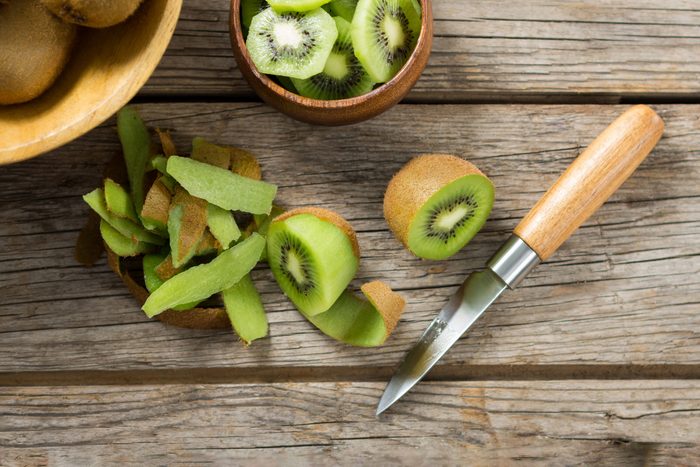From Tart to Sugary Food: Debunking What Do Kiwis Taste Like
Wiki Article
A Deep Study Kiwi Farming: Introducing the Methods, Obstacles, and Possible for Lasting Farming
Are you curious about the keys behind effective kiwi growing? Look no more! In this post, we will certainly take you on a deep study the methods, difficulties, and capacity for sustainable farming worldwide of kiwis. Discover the optimum expanding problems, innovative growing methods, and the sustainable techniques that can open the complete capacity of kiwi farming. Prepare yourself to uncover the surprise expertise that will transform your kiwi cultivation undertakings.Ideal Growing Problems for Kiwi Plants

Cutting-Edge Cultivation Strategies
General practitioner modern technology allows for precise mapping and tracking of the kiwi vines, maximizing watering and fertilizing methods to make sure that each plant obtains the essential nutrients and water. Another advanced technique is vertical farming, which includes growing kiwi plants in piled layers making use of fabricated lighting and climate-controlled environments. By embracing these cutting-edge techniques, kiwi farmers can achieve greater productivity, optimize resource utilization, and contribute to lasting farming techniques.Obstacles Encountered by Kiwi Farmers
Encountering many challenges, kiwi farmers need to navigate with various challenges to guarantee effective cultivation and sustainable farming practices. Kiwi plants require a details climate to flourish, with awesome wintertimes and warm summers.One more significant difficulty for kiwi farmers is parasites and conditions. Kiwi creeping plants are prone to an array of insects, consisting of termites, aphids, and thrips, which can damage the leaves and fruit. In addition, illness like Psa (Pseudomonas syringae pv. actinidiae) and botrytis can seriously impact kiwi manufacturing. Farmers need to use integrated pest management methods, such as normal surveillance, biological control techniques, and correct hygiene, to handle and protect against pest and disease outbreaks.
Moreover, kiwi farmers deal with labor and labor expense problems. Kiwi growing needs labor-intensive activities, such as pruning, trellising, and harvesting. Locating proficient workers who are knowledgeable about kiwi farming techniques can be tough. Labor prices can be high, particularly throughout peak look at this web-site seasons. Farmers need to purchase training programs, automation, and effective labor administration techniques to maximize efficiency and decrease labor expenses.
Sustainable Farming Practices for Kiwi Cultivation

To make certain lasting kiwi cultivation, you can implement a variety of practices that promote environmental stewardship and long-lasting feasibility of your ranch. One vital technique is the usage of natural plant foods and parasite management strategies. By staying clear of synthetic chemicals and instead choosing all-natural options, you can lessen the unfavorable effect on soil health and biodiversity. In addition, it is essential to exercise liable water management. Kiwi plants require a significant quantity of water, yet extreme irrigation can bring about water waste and soil disintegration. Implementing efficient watering systems, such as drip watering or accuracy lawn sprinklers, can aid preserve water and enhance its usage. Another lasting farming technique is making use of cover crops. These crops not just assist avoid soil disintegration however also improve soil fertility by adding raw material and taking care of nitrogen. Additionally, implementing incorporated bug management strategies can dramatically lower the requirement for chemical pesticides. By encouraging natural predators, utilizing next page pheromone catches, and practicing plant turning, you can successfully control bugs while reducing environmental injury. Embracing lasting energy techniques, such as using solar power or investing in energy-efficient modern technologies, can lower your ranch's carbon impact and contribute to a much more lasting kiwi cultivation system.
Opening the Potential of Kiwi Farming
By executing sustainable farming methods, you can open the complete possibility of kiwi farming while minimizing environmental impact. Kiwi farming has enormous possibility for development and profitability, but it also comes with its own set of more tips here challenges. To completely unlock this possibility, it is important to embrace sustainable methods that not only make best use of return and top quality yet additionally make certain lasting practicality.One trick element of opening the capacity of kiwi farming is enhancing irrigation practices - what do kiwis taste like. Kiwi plants require a specific quantity of water to thrive, and by using efficient watering systems such as drip watering or precision sprinklers, you can minimize water wastefulness and lower the threat of waterlogging or soil erosion
One more important factor is dirt health and wellness management. Healthy and abundant dirt is important for the growth and growth of kiwi plants. By carrying out methods such as cover cropping, plant rotation, and natural fertilizing, you can improve dirt framework, improve nutrient schedule, and lessen the need for chemical inputs.
In addition, incorporated pest monitoring (IPM) methods are crucial in opening the capacity of kiwi farming. By adopting IPM strategies such as biological parasite control, pheromone catches, and crop surveillance, you can successfully manage bugs and diseases while decreasing making use of chemical pesticides.
Verdict
To conclude, kiwi growing holds fantastic possible for sustainable farming methods. By implementing advanced techniques and getting rid of the challenges dealt with by farmers, we can open the complete capacity of this fruit (what do kiwis taste like). With optimal expanding conditions and a concentrate on sustainable methods, kiwi farming can thrive while lessening ecological impact. Get hold of a kiwi and sustain the future of sustainable agriculture!Discover the optimum expanding conditions, advanced farming techniques, and the sustainable practices that can unlock the complete capacity of kiwi farming. By welcoming these sophisticated techniques, kiwi farmers can achieve greater efficiency, enhance resource utilization, and contribute to sustainable farming practices.
Facing various difficulties, kiwi farmers need to browse with different challenges to make sure effective growing and lasting farming methods.By applying lasting farming techniques, you can open the full capacity of kiwi farming while reducing environmental impact.In conclusion, kiwi farming holds fantastic prospective for lasting farming methods.
Report this wiki page